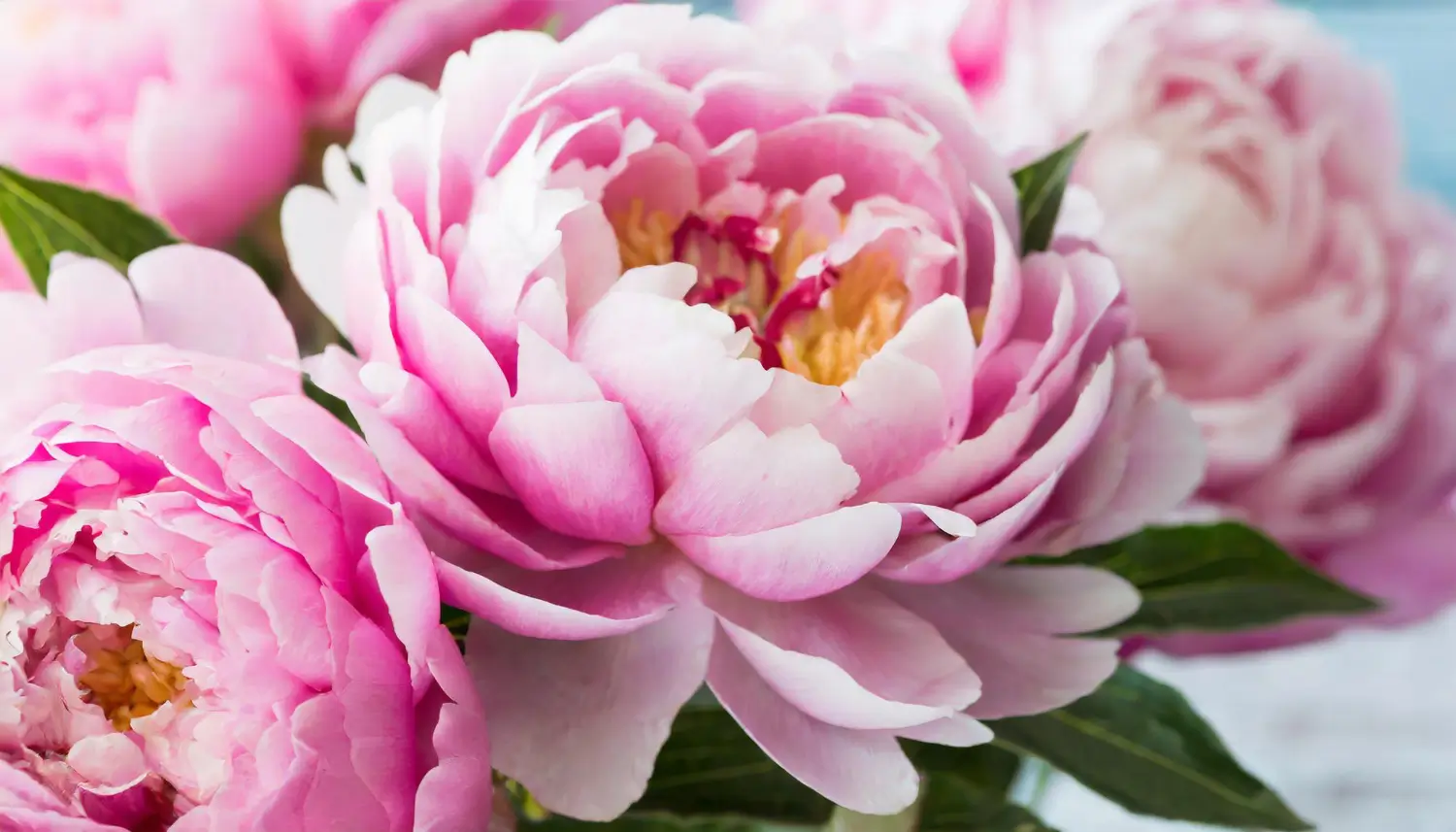
August 24, 2025

Gardening is a way to enjoy nature, make outdoor spaces more beautiful, and grow plants that last for many years. Peonies are some of the most loved perennials, and they are known for their large, colorful blooms, sweet fragrance, and ability to live for decades. These flowers have been grown in gardens for hundreds of years and are often seen as symbols of good fortune, love, and happiness.
Peonies are hardy, can withstand cold winters, resist many common pests, and bloom every year with little maintenance. Because of this, they are a great choice for both beginners and experienced gardeners. These plants can provide long-lasting beauty and improve garden landscapes throughout the year.
Growcycle offers a variety of soil amendments and fertilizers that can improve soil quality and provide essential nutrients. Their products are designed for application as a top dress or to be incorporated into the soil, promoting robust root development and vibrant blooms.
Peonies are native to regions of Asia, Europe, and North America, and China was one of the earliest cultivators of these beautiful flowers. Before they became valued for their ornamental beauty, the Chinese had grown peonies for over 1,500 years, primarily for their medicinal properties. In China, peonies are known as the "King of Flowers" and are closely linked to royalty, honor, and feminine beauty.
Peonies were introduced from China to Japan and quickly became an important part of traditional gardens. These plants symbolize bravery, wealth, and good fortune. In Europe, peonies became popular during the medieval period mainly because of their healing properties. Monks and herbalists used peony roots and seeds to treat various ailments, including digestive problems and inflammation. Over time, they became a favorite flower in Victorian-era gardens, where they symbolized romance and prosperity.
Throughout history, poets, painters, and designers have drawn inspiration from peonies, making them one of the most beloved flowers worldwide. Their cultural significance continues today, as they remain a favorite choice for gardens, celebrations, and artistic expressions.
Peonies (Paeonia spp.) are perennial flowering plants belonging to the Paeoniaceae family. They are known for their large, showy blooms, lush foliage, and long lifespan. With minimal care, peonies can survive for decades.
Peonies are known for their long lifespans, often thriving for 50 years or more in the same location. They typically grow between 1 and 4 feet (30 to 120 cm) tall and spread 2 to 3 feet (60 to 90 cm) wide. Their dark green, deeply lobed leaves remain attractive throughout the growing season and turn red or gold in autumn.
The flowers bloom from late spring to early summer, with each plant flowering for 7 to 10 days. Many peony varieties produce a sweet, strong fragrance that attracts pollinators like bees and butterflies.
Peony flowers can range from 2 to 10 inches (5 to 25 cm) in diameter, depending on the variety. They produce different flower shapes, including:
They also come in a wide range of colors, including white, pink, red, yellow, coral, and purple.
Peonies develop thick, tuberous roots that allow them to store nutrients and survive extreme temperatures. In colder climates, they die back in winter and regrow in spring. Seeds mature into flowering plants for several years, so they are mainly propagated through root division.
Peonies come in three main types; each variety has unique characteristics, growth habits, and maintenance needs. Choosing the right type depends on the climate, garden space, and personal preferences:
These are the most common peonies, known for their lush foliage and large blooms. They die back to the ground each winter and regrow in spring. Here are some of its characteristics:
Unlike herbaceous peonies, tree peonies have woody stems that remain throughout the year. They are known for their large, delicate blooms and long lifespan. Here are some of its characteristics:
Intersectional peonies, also known as Itoh peonies, are a hybrid between herbaceous and tree peonies. They combine the best traits of both types, offering strong stems, large flowers, and improved disease resistance. Here are some of its characteristics:
Peonies are beautiful and long-lasting flowers but need the right growing conditions to thrive. Here are the several factors to consider while planting the peony in the garden:
Peonies grow best in regions with cold winters, as they need winter dormancy for proper bud formation. Their growth depends on USDA Hardiness Zones:
Peonies need at least 6 hours of sunlight daily to bloom fully. Tree peonies can tolerate partial shade, but excessive shade reduces the number and size of flowers. Peonies should be placed in an area where they receive morning sun and some afternoon shade to prevent overheating in warmer climates.
Peonies need well-drained, nutrient-rich soil to grow strong and healthy. The soil should be loamy or sandy, not heavy clay or waterlogged, which can cause root rot. Before planting, the soil should be loosened to a depth of 12–18 inches to accommodate the plant’s deep root system.
The ideal pH is neutral to slightly alkaline (6.5–7.5). If the soil is too acidic, adding lime can help balance it. Mix organic compost or aged manure to improve soil fertility and drainage. Adding perlite or sand can help loosen heavy soil.
The ideal time to plant peonies is from late September to early November before the ground freezes. Planting in the fall allows peonies to establish strong roots over winter, leading to healthy growth and abundant blooms in the following spring.
Spring planting is possible but less favorable compared to fall planting. It should be done as early as possible in spring, as soon as the soil is soft enough to dig. However, peonies planted in spring take longer to establish and may not produce blooms for an extra year.
Proper planting techniques ensure that peonies grow strong roots, avoid transplant shock, and thrive for many years.
Herbaceous and Itoh peonies should be spaced 2–3 feet apart to allow for good air circulation and prevent disease. Tree peonies need 3–4 feet of space as they grow into small shrubs over time. Avoid planting peonies too close to large trees or shrubs. They will compete for water and nutrients, affecting growth and flowering.
Peonies are low-maintenance plants, but proper care ensures they produce healthy foliage and abundant blooms year after year.
Proper watering keeps peonies healthy and prevents issues like wilting, disease, or poor blooms. They need deep watering once a week, providing about 1 inch of water to encourage strong root growth.
Always water at the base of the plant to prevent fungal diseases on the leaves. Avoid overhead watering to reduce moisture buildup.
Providing the right nutrients helps peonies develop lush foliage and large, vibrant blooms. The best time to apply fertilizer is in early spring, when new shoots begin to emerge. A balanced fertilizer (10-10-10) provides essential nutrients for early growth. After the blooming period, applying a low-nitrogen fertilizer helps strengthen the roots and prepares the plant for the next growing season.
Mulching helps retain moisture, regulate soil temperature, and suppress weeds, creating an ideal growing environment for peonies. Organic mulch such as shredded bark, straw, or compost improves soil structure over time. Apply 2–3 inches of mulch around the base of the plant, leaving a small gap around the crown to prevent rot.
Proper pruning maintains plant health and encourages continuous flowering. Remove spent flowers by cutting just above a healthy leaf, preventing the plant from wasting energy on seed production. Always use clean, sharp pruning shears to avoid spreading infections.
Peonies are long-lived perennials, but they may become overcrowded over time, leading to reduced flowering. Propagation through division is the most effective way to rejuvenate older plants, expand a garden, or share peonies with others.
This division process must be done carefully to avoid damaging the plant. The best time for division is early fall (September to October) or early spring before new growth begins.
Proper care after dividing and replanting is crucial to helping new peonies establish. Water deeply but sparingly to ensure the soil remains moist but not waterlogged. In the first year, avoid applying heavy fertilizers, as new roots need time to develop before absorbing nutrients effectively. A light application of phosphorus-rich fertilizer can encourage root growth.
To minimize transplant shock, plant divisions should be in a well-drained, sunny location and protected from strong winds. Some divisions may take one to two years to bloom, but patience will be rewarded with healthy, vibrant flowers that last for decades. Regular weeding and light mulching will help maintain optimal soil conditions for new peony plants to thrive.
Peonies are among the most cherished perennials, offering stunning blooms, delightful fragrances, and garden longevity. Their resilience, low-maintenance care, and adaptability to various climates make them an excellent choice for gardeners of all experience levels. With proper planting, fertilization, watering, and occasional division, peonies can thrive for decades, boosting landscapes with their beauty and elegance. Visit Growcycle to learn more about the planting techniques for growing peonies.
Disclaimer: This material is for informational purposes only and should not be relied on for legal, medical, financial, or any other form of professional advice.
Peonies thrive in USDA Hardiness Zones 3–8, where cold winters are necessary for bud formation. They prefer full sun, well-drained soil, and protection from strong winds.
Peonies prefer at least 6 hours of full sun daily for best flowering. Tree peonies can tolerate partial shade, but too much shade reduces bloom production.
Peonies are prized for their large, fragrant blooms, long lifespan (they can live for decades), and rich symbolism in various cultures. They represent prosperity, romance, and good fortune.